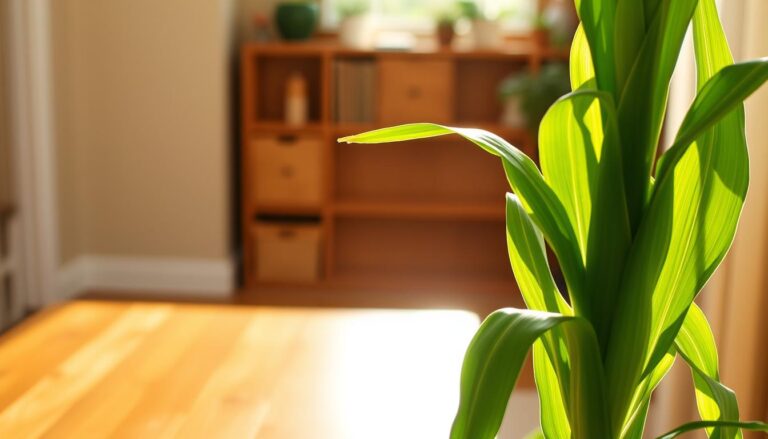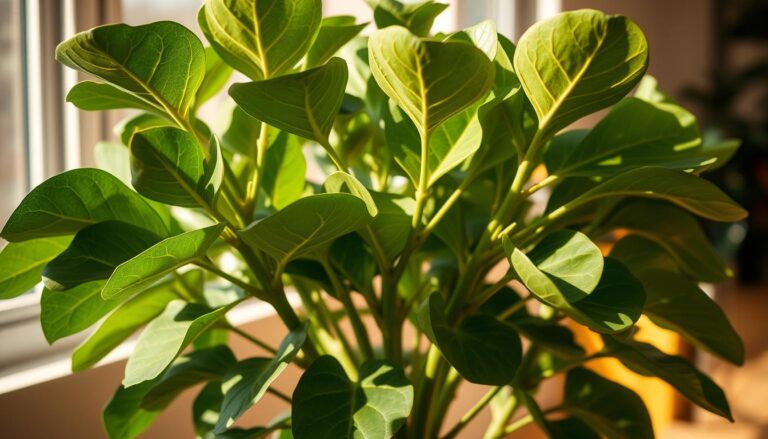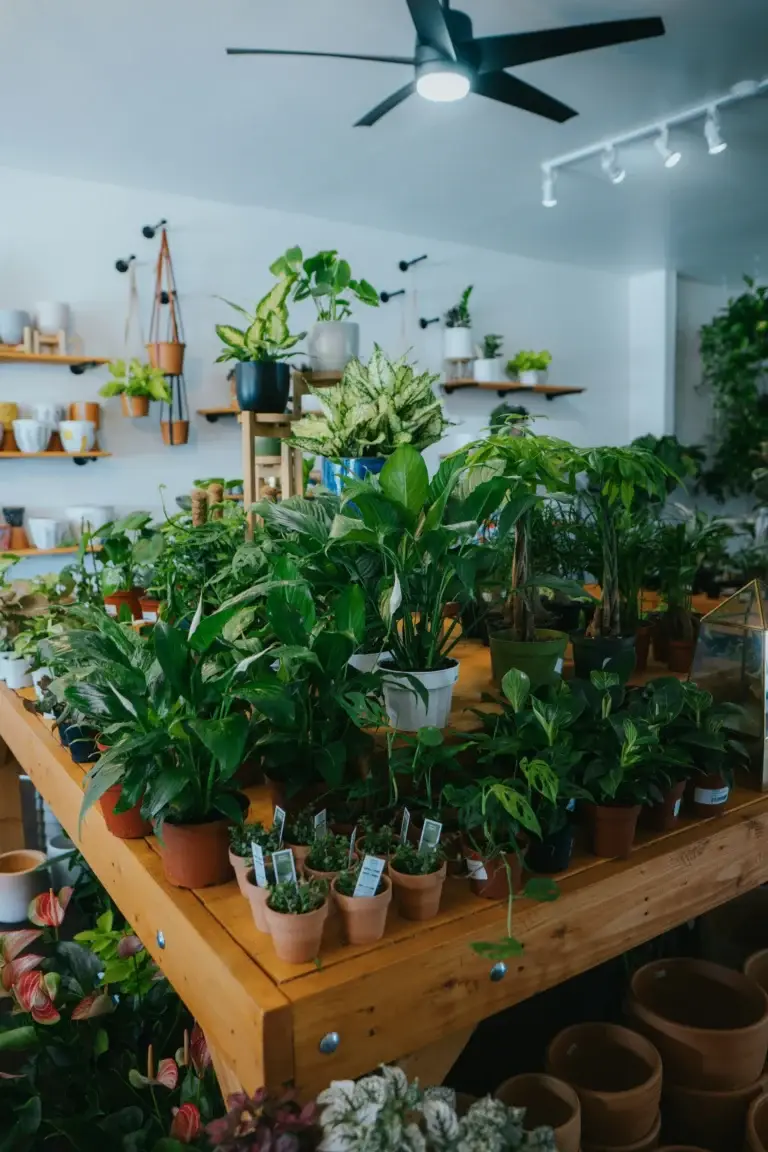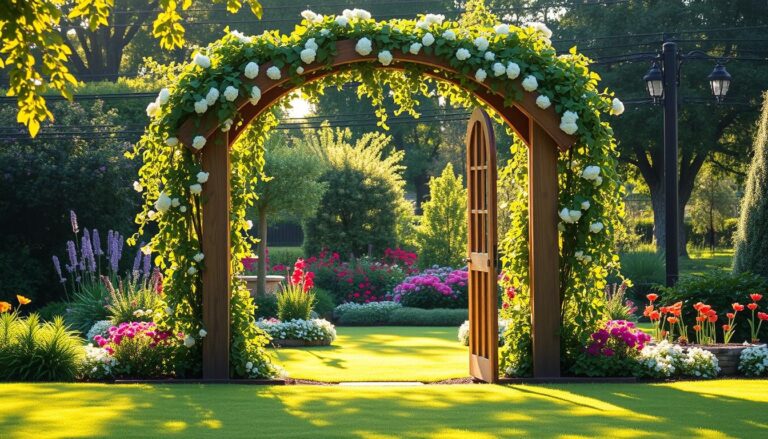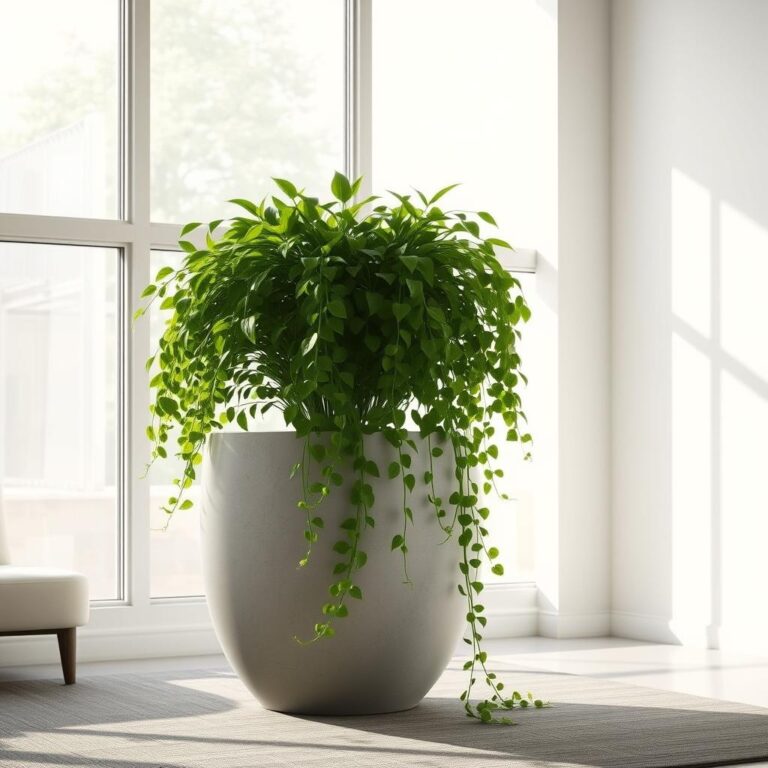How to Care for White Bird of Paradise Plant
Imagine bringing a touch of tropical paradise into your home with the stunning White Bird of Paradise plant. Known for its striking, paddle-shaped leaves and elegant appearance, this plant is a favorite among both novice and experienced plant enthusiasts. Native to the coastal forests of South Africa, the White Bird of Paradise, or Strelitzia nicolai, captivates with its large, glossy leaves that resemble a fan. Whether you’re looking to enhance your indoor space or garden, this guide will walk you through everything you need to know to keep your White Bird of Paradise thriving.
Proper care is key to enjoying the full beauty of this tropical plant. From understanding its lighting needs to maintaining the right humidity levels, we’ll cover it all. By the end of this article, you’ll be equipped with the knowledge to create an ideal environment for your White Bird of Paradise, ensuring it brings a slice of tropical beauty to your space year-round.
Table of Contents
Embracing the Tropical Heritage of the White Bird of Paradise
Discover how the White Bird of Paradise brings a touch of tropical elegance into your home. This plant, known scientifically as Strelitzia nicolai, is native to the lush coastal forests of South Africa, where it thrives in warm, humid environments. Its striking, paddle-shaped leaves and elegant stature evoke the exotic beauty of its natural habitat, making it a popular choice for interior designers and plant enthusiasts alike.
Understanding Its Natural Origins
The White Bird of Paradise is a true marvel of nature, with origins tracing back to the tropical regions of southeastern South Africa. In its natural habitat, it grows in shaded, humid areas near rivers and streams, where the soil is rich and the climate is warm. This plant has adapted to these conditions over centuries, developing large, fan-like leaves that can reach up to 8 feet in length. Its impressive size and striking foliage make it a standout in any environment.
Indoor and Garden Adaptability
Despite its tropical roots, the White Bird of Paradise is remarkably adaptable. It flourishes in indoor spaces, where it can be grown in large pots and placed in bright, indirect light. In garden settings, it prefers well-drained soil and partial shade, making it an ideal addition to patios or shaded garden areas. Whether you’re enhancing your indoor space or creating a tropical oasis in your garden, this plant brings a touch of paradise to your surroundings.
Its historical and cultural significance as a symbol of tropical beauty has made it a favorite among designers and plant enthusiasts. The plant’s ability to adapt to different environments while maintaining its tropical flair has solidified its place in modern interior design. As you learn more about its specific needs, you’ll be able to create an ideal environment for your White Bird of Paradise, ensuring it brings beauty and elegance to your space for years to come.
Light, Temperature, and Humidity Requirements
Creating the right environment for your Strelitzia nicolai involves balancing light, temperature, and humidity. These factors are crucial for mimicking its natural habitat and ensuring healthy growth.
Optimizing Indoor Lighting Conditions
Place your plant in bright, indirect light to promote healthy foliage. Direct sunlight can scorch the leaves, so use sheer curtains to filter the light. During autumn and winter, consider using grow lights to maintain optimal conditions.
Managing Temperature and Humidity Levels
Maintain a temperature range of 65°F to 75°F for your plant. Humidity should be at least 60% to replicate its tropical origins. Use a humidifier or mist the leaves regularly to maintain the right moisture levels.
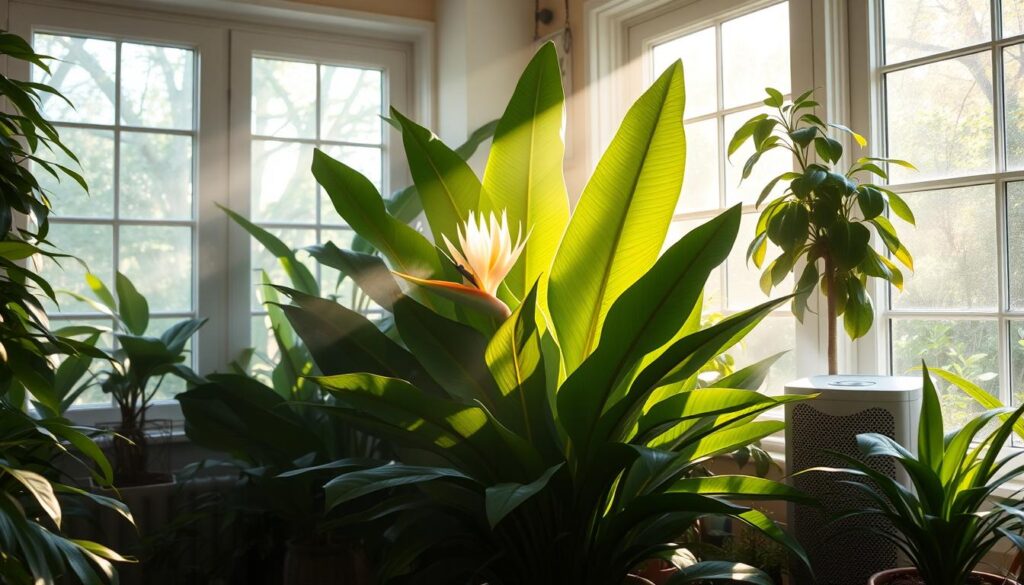
- Ensure bright, indirect light for healthy growth.
- Avoid direct sunlight to prevent leaf damage.
- Use grow lights during winter months.
- Maintain a temperature range of 65°F-75°F.
- Keep humidity levels above 60% for optimal conditions.
By adjusting these environmental factors, you can create an ideal setting for your Strelitzia nicolai to thrive indoors.
Watering and Soil for White Bird of Paradise
Proper watering and soil care are essential for the health of your Strelitzia nicolai. Understanding these elements will help you create an ideal environment for your plant to thrive.
Watering Guidelines for Optimal Growth
Water your plant when the top inch of soil feels dry to the touch. This ensures the roots receive enough moisture without waterlogging. During spring and summer, when the plant is actively growing, you may need to water more frequently. In autumn and winter, reduce watering to once every 4-6 weeks, as the plant’s growth slows down.
Avoid getting water on the leaves to prevent fungal diseases. Instead, water at the base of the plant, allowing the soil to absorb the moisture fully. This method promotes healthy root development and prevents common issues like root rot.
Ensuring Proper Soil Drainage and Nutrition
Use a well-draining potting mix specifically designed for tropical plants. This helps prevent water from pooling in the soil, which can lead to root rot. Consider adding compost or peat moss to enrich the soil with essential nutrients, promoting vibrant foliage and robust growth.
Repot your plant every 2-3 years to refresh the soil and provide a larger pot if necessary. Choose a pot with good drainage holes to ensure excess water can escape, maintaining healthy root conditions.
| Signs of Overwatering | Signs of Underwatering |
|---|---|
| Yellowing leaves | Curling or browning leaves |
| Soft, mushy stems | Wilting or droopy foliage |
| Fungal growth on soil | Slow growth rate |
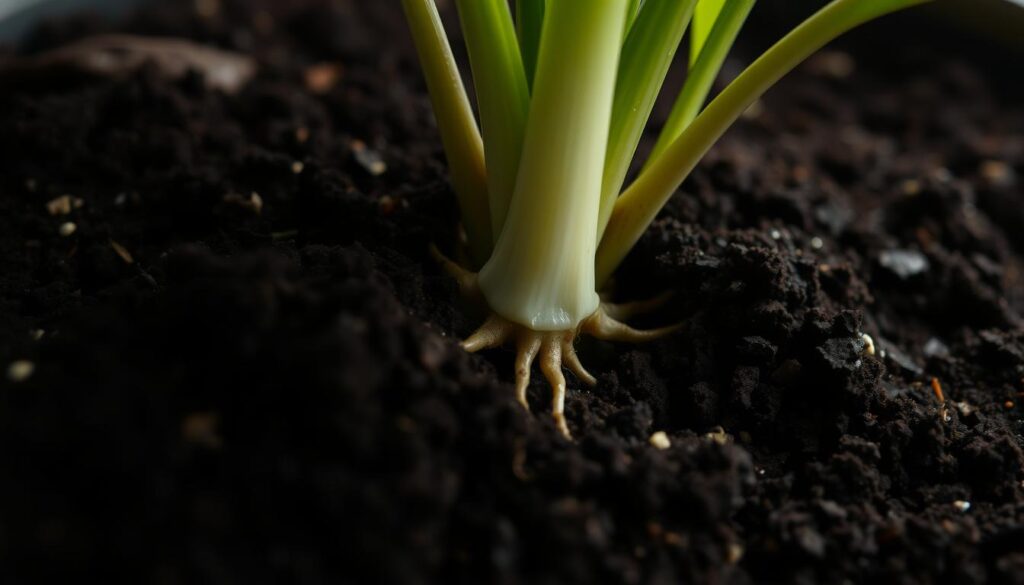
By following these guidelines, you can ensure your Strelitzia nicolai receives the right amount of water and nutrients, fostering a healthy and thriving plant. Remember, proper care leads to a vibrant and stunning addition to your indoor space.
Fertilization and Pruning Techniques
Nourishing your White Bird of Paradise plant is key to its vibrant growth and flowering. Proper fertilization and pruning are essential for maintaining its health and encouraging blooming.
Choosing the Right Fertilizer for Tropical Plants
A balanced, water-soluble fertilizer is ideal for your Strelitzia nicolai. Look for a formula with a 1:1:1 ratio of nitrogen, phosphorus, and potassium. This ensures your plant gets all the necessary nutrients for healthy foliage and robust growth.
Fertilize every 6-8 weeks during the spring and summer when your plant is in its active growth phase. Dilute the fertilizer to half the recommended strength to avoid burning the roots. Over-fertilizing can lead to salt buildup, which can harm your plant over time.
Effective Pruning Methods for Healthy Regrowth
Pruning is vital for maintaining the appearance of your White Bird of Paradise and promoting new growth. Use sharp, clean pruning shears to prevent spreading diseases.
Remove any dead, damaged, or yellowing leaves to direct your plant’s energy towards healthy growth. Cut these leaves at the base, just above a node. Prune in early spring before new growth begins, as this minimizes stress on the plant.
Only remove up to one-third of the plant at a time to prevent shock. Regular pruning helps improve airflow, reducing the risk of fungal diseases and encouraging more blooms.
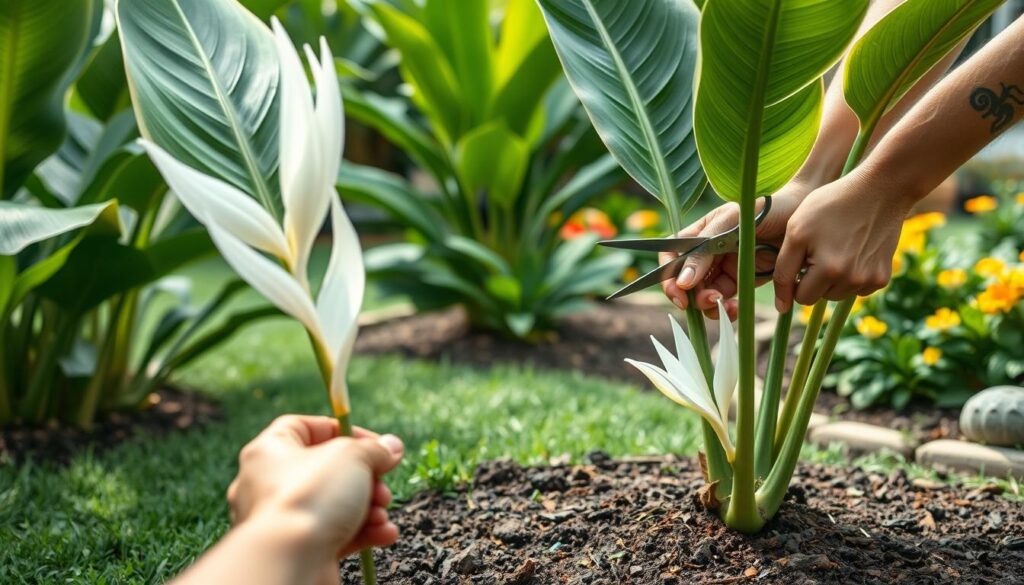
By following these fertilization and pruning tips, you’ll help your White Bird of Paradise thrive, ensuring it remains a stunning addition to your space with vibrant foliage and beautiful blooms.
Troubleshooting Common Care Challenges
Every plant parent faces challenges, and your Strelitzia nicolai is no exception. Recognizing issues early and taking prompt action can save your plant from distress. Let’s explore common problems and how to address them.
Identifying Overwatering and Underwatering Signs
Check your plant’s leaves and stems for signs of water stress. Overwatering leads to yellow, droopy leaves and soft, mushy stems. If you notice these symptoms, stop watering until the soil dries out. Underwatering, on the other hand, causes leaves to curl and turn crispy. Adjust your watering schedule to ensure the soil is moist but not waterlogged.
Addressing Sunburn, Pests, and Leaf Issues
If your plant is exposed to direct sunlight, it may develop brown spots or scorched leaves. Move it to a spot with bright, indirect light to prevent further damage. Regularly inspect your plant for pests like spider mites or mealybugs. Treat infestations with insecticidal soap or neem oil, following the product’s instructions. For persistent leaf issues, adjust humidity levels and ensure proper air circulation around your plant.
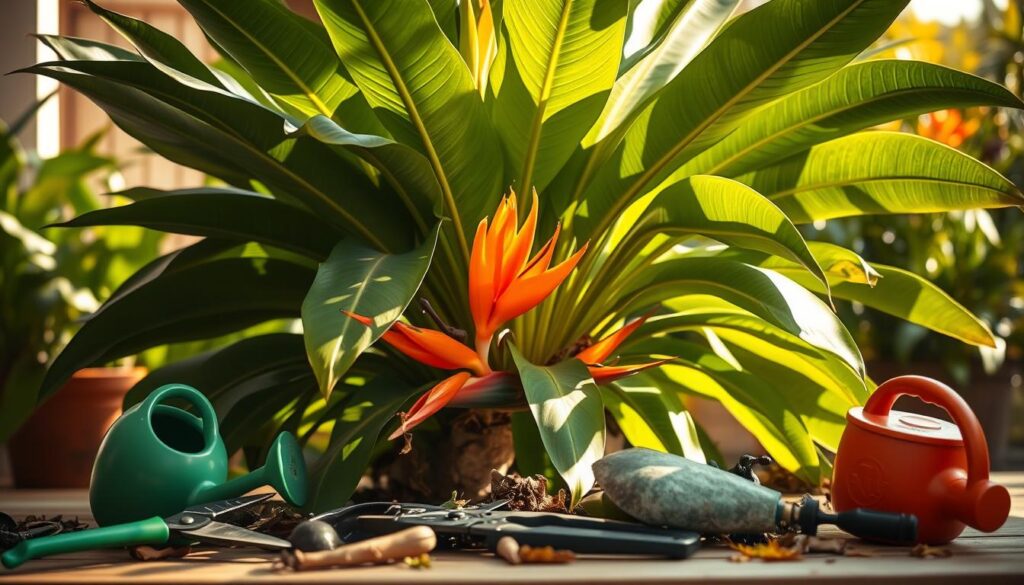
By staying observant and taking quick action, you can help your Strelitzia nicolai recover from common challenges and maintain its tropical beauty.
Conclusion
Caring for your Strelitzia nicolai is a rewarding journey that brings a touch of tropical elegance to your home. By focusing on a few key areas, you can ensure your plant thrives and remains a stunning centerpiece in your space.
First, prioritize optimal lighting and humidity. Place your plant in bright, indirect light and maintain humidity levels above 50% to mimic its natural habitat. Regular misting or using a humidifier can help achieve this balance.
Watering is another crucial aspect. Check the soil moisture by inserting your finger into the soil up to the first knuckle. Water only when the soil feels dry, and avoid getting water on the leaves to prevent fungal issues. Adjust your watering schedule based on the season, reducing frequency in fall and winter.
Soil quality plays a significant role in your plant’s health. Use a well-draining potting mix enriched with compost or peat moss to provide essential nutrients. Repot your plant every 2-3 years to refresh the soil and accommodate growth.
Lastly, don’t forget about fertilization and pruning. Feed your plant with a balanced fertilizer during the growing season (spring and summer) to promote healthy growth and flowering. Prune dead or damaged leaves in early spring to maintain its appearance and direct energy towards new growth.
By following these guidelines, you’ll be well on your way to becoming a skilled plant parent. Remember, every plant is unique, so stay observant and adjust your care routine as needed. With proper attention, your Strelitzia nicolai will flourish, bringing beauty and a touch of the tropics to your home.


